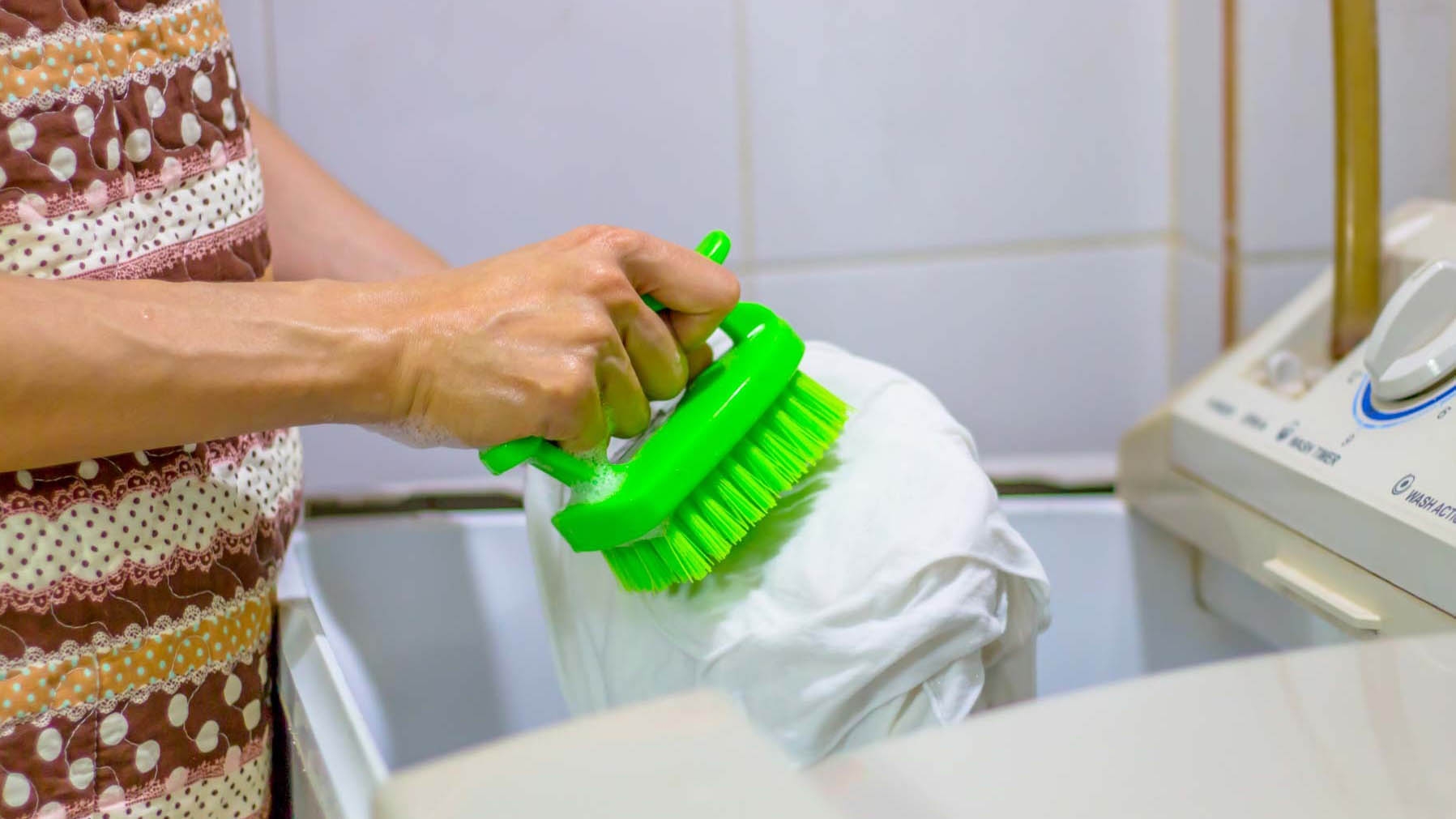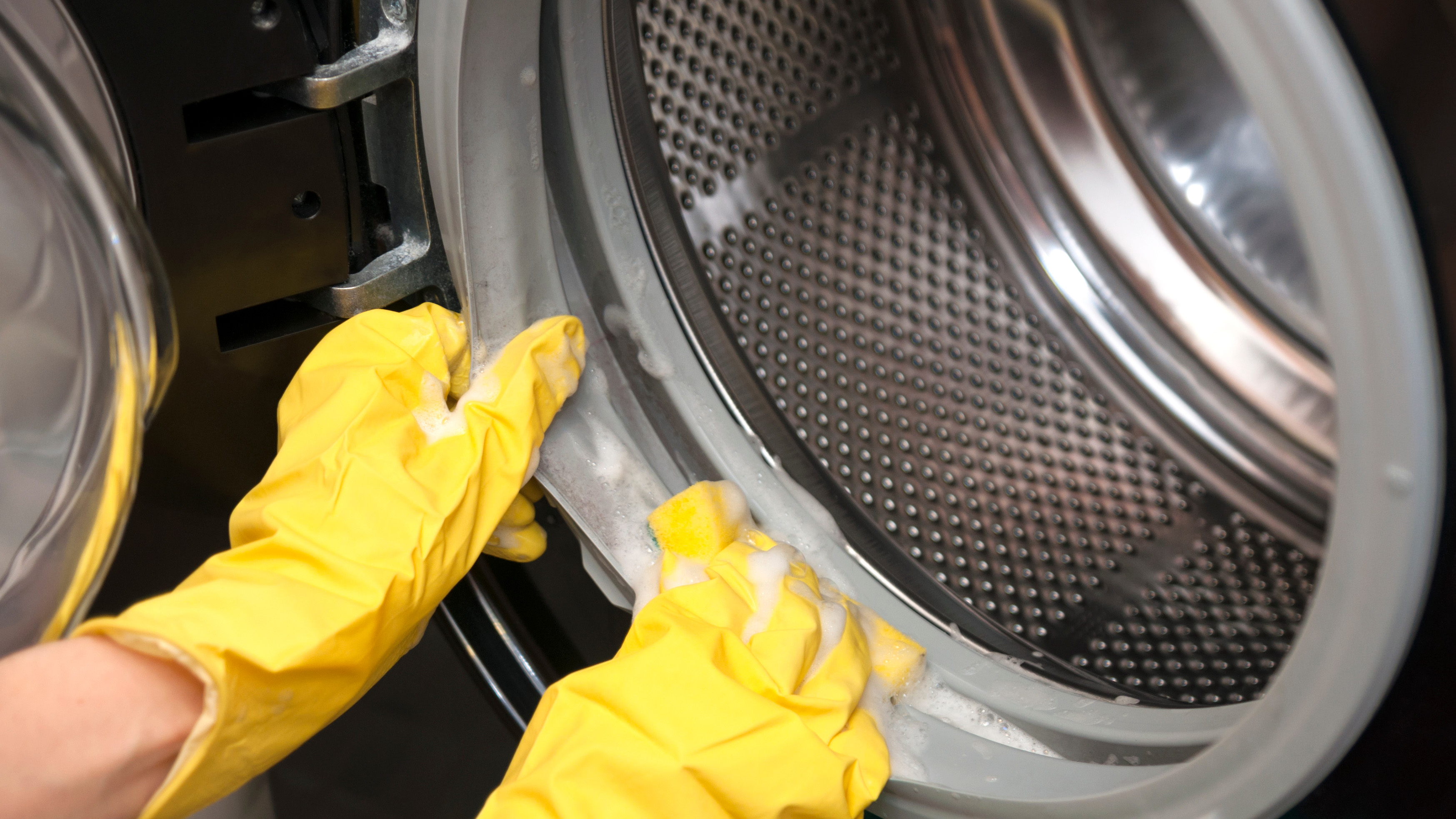
It's nobody's favorite chore, so it's no surprise that many of us like to spend as little time doing the laundry as possible. In practice, this means throwing armfuls of sheets and sweaters into your machine, and hastily folding your dried garments ready to be used all over again.
However, even the best washing machines and best clothes dryers will struggle to perform at their best if you're not using them correctly, so if your finished laundry leaves something to be desired, it might just be the case that you're making one of these 5 common laundry mistakes.
We spoke to laundry experts from LG and GE to find out their tips for getting the best wash, every time. Following these steps can not only make your washing machine last longer, but also result in cleaner, fresher sheets and clothes.
The 5 laundry mistakes you're probably making
1. Not pre-treating stains

Taking your freshly-washed t-shirt out of the dryer only to see the faint remnants of last week's pasta sauce, is a familiar feeling to parents (and messy eaters) everywhere. Many of us would immediately put the stained garment straight back in for another cycle, wasting energy and water, but the trick to avoiding this mistake altogether is to act fast.
"You should pre-treat stains as soon as possible" says David Wilson, Senior Commercial Director of Clothes Care at GE Appliances. "The quicker you can treat a stain, the more success you'll have in removing it!"
2. Using the wrong amount of detergent

When dealing with dirty sheets or towels, it can be tempting to throw in some extra detergent to give your machine the best possible chance of cleaning every item. When it comes to detergent though, more is not always merrier.
"Detergent overdosing results in increased work for the machine, decreased wash performance, and can result in clothing damage," says David Palmer, Senior Product Specialist at LG Home Appliances. "Excess detergent not only costs you money, but it can also leave residue." When dry, this could leave a crispy texture to your clothes which is bad for the durability of your clothing, and also a possibly unpleasant texture to have against your skin.
A good sign that you have used the right amount of detergent is to take a look at how it's responding in real-time. "Dose detergent to the point where you see just a few bubbles of suds while washing. At that point, you have it just right" said David Wilson.
You can also find an increasing number of smart washing machines that feature automatic dosing, meaning they will hold your detergent for you and dispense the perfect amount every time.
3. Not maintaining your appliance properly

It may seem counterintuitive to need to clean your washing machine or dryer. After all, you're regularly running cleaning detergent through the machine, designed to kill germs and remove stains. However, if left for too long your machine itself can start to get grimy in places, and you wouldn't expect a dirty machine to leave your clothes fresh and clean.
"Maintaining your appliance is key to the longevity of your machine" said David Wilson of GE Appliances. "We recommend emptying the dryer lint filter after each cycle and cleaning out the dryer hose at least once a year."
"Additionally, you should regularly run the clean cycle on your washing machine and clean the outsides of your appliance."
How often? Well, according to LG you should run a tub clean "every 30 cycles to ensure it can perform at the best of its ability."
We have a dedicated guide on how to clean a washing machine, which walks through the steps you need to take when deep-cleaning your appliance.
4. Overloading your machine

"While it is more cost-effective to fill up your machine, don’t be tempted to overfill your appliance as this can make it less effective at cleaning clothes properly," says LG's Palmer.
"The simple test to check if you’re at optimum capacity is to place your hand on the top of the drum, if you can freely move your hand, you’re good to go!"
"You should only load your washer and dryer with the number of items that will move freely during the cycles" says GE's Wilson. Sure, it can be tempting to cram in as much as your washer or dryer can handle, but this will result in damp, still-dirty clothes, so it won't save you any time or money long-term.
"Remember to adjust the water level in your washer according to the load. Many use and care manuals for washers and dryers will provide loading instructions as well. "
5. Not sorting laundry properly

"Sorting is the most important step in laundry", according to David Wilson. Sure, it can take some extra time to sort through your dirty sheets and clothes when you could just put the whole basket straight into the washer, but separating your items correctly will ensure that each garment gets the specific clean it needs.
"Not only should users sort laundry by color, but they should also sort by fabric type and soil level. Additionally, it’s important to check all items for pockets that don’t belong in the wash and close all zippers, buttons, and hooks. Finally, we recommend that users turn items inside out to reduce surface wear and because the inside of garments tend to be dirtier and more soiled than the outside."
LG told us "the best way to fill a washing machine is item by item, don't just dump the washing basket right in! It helps the wash performance and means there are no unwanted guests like pens or phones your children may have forgotten."
"Different items can be mixed, but don't wash delicate light fabrics with something with Velcro!"
Some people invest in dedicated laundry baskets with sections for separating your laundry out, which means the task doesn't solely fall on the person who does the laundry in your home.







